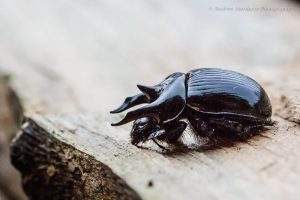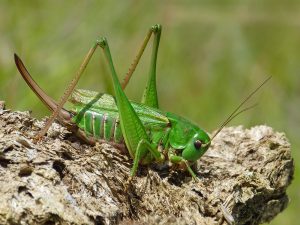National Insect Week: 10 species to find in the South Downs
June 18, 2018
Written by Matt Dowse, South Downs National Park Ranger. Picture: Chalk hill blue © Nigel Symington
Everyone knows the importance of chalk grasslands for their botanic diversity, and it is an often quoted that you can find as many as 40 species of plants per square metre of good quality chalk grassland. But there is another taxonomic group for which the sun-soaked chalk grasslands (and heathlands) that the South Downs National Park is blessed with provide a haven of habitat; the insects. Which means for those entomologists (insect-studiers) and budding entomologists amongst us, there are innumerable species to get out there and discover.
You may be unaware that insects account for over 80% of the total number of animal species on the planet. In fact, there are more insects known to science than any other group of animals (e.g. birds, mammals, reptiles etc.), and more beetles than any other type insect. Indeed, when the evolutionary biologists J. B. S. Haldane was asked if his studies into the biological sciences had revealed to him anything about the nature of God, he replied that any creator must have an inordinate fondness of beetles!
Insects come in all shapes and sizes, from the universally admired butterflies, to the less revered and sometime bemoaned flies and bugs. Some are common and widespread, whilst others are elusive and enigmatic. Here are some more common species to whet your appetite for entomology:
Chalkhill blue butterfly (Polyommatus coridon)
One of the largest species of blue butterfly found in the UK, chalkhill blues can extremely numerous on the chalk grasslands they inhabits. In good years, clouds of hundreds of them can be seen in August. Their wings are a more milky blue than either the common blue or adonis blue, making them very recognisable in the field.
Minotaur beetle (Typhaeus typhoeus)

The minotaur beetle is one of the dung beetles found in the UK, often encountered on heathlands, rolling a ball of rabbit or deer droppings back to their burrows. Like other species of beetle (most notably the stag beetles) males have exaggerated physical features that they use to compete for females. In the case of the minotaur beetle, these are long prongs that extend forward from their thorax.
Sloe shiedbug (Dolycoris baccarum)
Shield bugs are a group of the true bugs (or hemiptera); an order of insects with sucking mouth parts. Shield bugs in general are usually easily identifiable by the shield-like shape of their bodies. One of the most common species is the sloe (or hairy) shield bug. Look for these on farmland hedgerows alongside rights of way.
Common green grasshopper (Omocestus viridulus)
Almost everyone will be familiar with the sounds that male grasshoppers and crickets (the order orthopteran) make, which is characteristic of long summer days on the Downs. These noises are created by stridulation – the rubbing together of certain body parts. In the case of grasshoppers, they are made by rubbing their wings against pegs that protrude from their legs, whilst in crickets they are made by rubbing their wings together. What you might not know is that these stridulations are species specific, and can be used to identify different species. If you are out for a walk on a sunny day on the downs and hear what sounds like a tiny helicopter in the grass beneath you, it’s likely you are listening to a common green grasshopper.
Glow worm (Lampyris noctilucai)
Glow worm is a slight misnomer, as they are actually a species of beetle. It is the females (which are wingless) that emit the famous green-yellow light from their abdomens at night in order to attract males, by a process known as bioluminescence. Females will climb up the stems of grasses in order to secure the best vantage point for their displays. A night time stroll over the Downs will hopefully reveal this nocturnal wonder.
For the more keen and patient entomologists, here is a run down of some of the rarest insects to be encountered in the South Downs National Park:
Wart biter (Decticus verrucivorus)

The largest and rarest bush cricket in the UK, this is a species emblematic of well managed chalk grassland. It can be found at Castle Hill and Mount Caburn National Nature Reserves, where it’s bicycle-wheel-like song can be heard on sunny days in August. The South Downs National Park Authority is currently working on a project with Buglife, Natural England, South East Water and other partners to increase the number of populations of wart biter in the South Downs.
Sychophant beetle (Calosoma sycophanta)
Arguably one of the most spectacular and rarest ground beetles (carabids) in the UK. It’s iridescent wing cases (or elytra) can only be described as beautiful.In truth it is more of a very rare vagrant from the continent than anything else. However, Senior Ecologist from the Sussex Wildlife Trust Graeme Lyons found one last year on a farm in the eastern end of the South Downs National Park. As wonderful as it would be to see, caution realism should be advised; previous to Graeme’s record, the last sighting for the species in Sussex was in the eighteenth century.
Potter flower bee (Anthophora retusa)
The abundance of flowering plants in the South Downs, be that on chalk grasslands, heather-filled heathlands, or pollen and nectar strips on farms, provides and important resources for nectar-feeding insects. It is perhaps unsurprising therefore that there are several populations or rare bees to be found within the National Park. One such species is the potter flower bee, which can be found tucked away on Seaford Head in the eastern Downs. Here, the iconic white chalky cliffs provide an ideal home for this burrowing bee.
Heath tiger beetle (Cicindela sylvatica)
Make no mistake, the heath tiger beetle is a voracious predator of its eponymous habitats, ruthlessly feeding on other invertebrates that it captures in its formidable mandibles. The key feature of heathlands for this species is areas of bare ground, which it burrows into to lay eggs, an in which it’s larvae live before emerging to hunt on the surface. The heath tiger beetle is one of the many beneficiaries of the South Downs National Park’s Heathlands Reunited project, aiming at restoring and reconnecting fragmented patches of heathland habitat within the National Park.
Common clubtail dragonfly (Gomphus vulgatissimus)
There are few insects as adept at flying and aerial manoeuvres as dragonflies. It is a sobering thought then, that during the carboniferous period (around 350 million years ago) the skies were filled with close relatives of modern day dragonflies that had a wingspan of 70cm! Fortunately, their modern day counterparts are far more modest. One of the less common specices is the (confusingly named) common clubtail. A species associated with slow flowing rivers, a very localised population exists on the river Arun.
